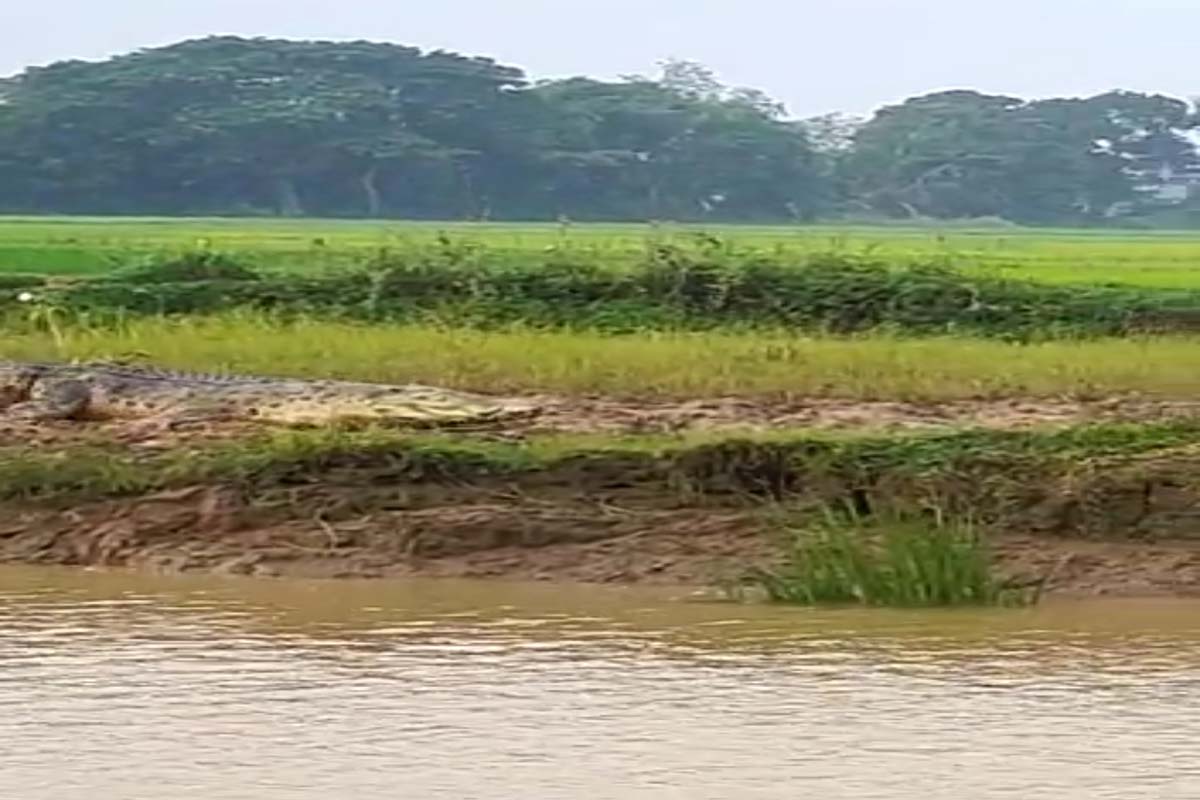With rampaging salt-water crocodiles stealthily sneaking into croplands, farming activities in Odisha’s Kendrapara district, home to 70% of India’s estuarine crocodile, has begun to be affected in river-side villages.
The sighting of crocodiles in waterlogged agriculture fields had made the kariff growers scary with farmers skipping transplantation work in several villages of Rajnagar and Rajkanika blocks. As the crocs attacking the humans appear imminent, farmers are not in a mood to risk their lives.
“We have spotted a giant crocodile measuring above 14 feet in the crop field. It has strayed to eat up fish and other aquatic animals in the water-logged fields. It is showing no signs of heading towards the Baitarani river habitat. We are in a quandary as the animal poses danger to life. The rain has impounded our area for the past 48 hours. It has now become conducive to transplantation. However we are forced to suspend agriculture work”, said Braja Kishore Sahu, a farmer from Jayanagar village.
Advertisement
There has already been a delay in the transplantation of paddy seedlings due to deficient rain. Further delay that is being caused due to crocodile intrusion will hit the Kharif cultivation badly, he added.
The crocodiles are unleashing terror in villages. Each of the water bodies here is crocodile-infested. Venturing into a river to take a bath is like risking one’s life. People are getting killed at regular intervals, said Pradeep Kumar Das, a resident of Iswarpur village under Rajnagar Tehsil.
He was echoed by many others who claimed that frequent intrusion of wild animals into places of human habitation has made life miserable for river-side villages on the fringes of Bhitarkanika national park.
There are reports of crocodiles straying into agricultural fields. In the monsoon season, such acts of straying are reported. Farmers are being advised to remain on alert. The forest staff has rushed to the spots to drive away from the animals to their original habitats, said a forest official.
The forest department has initiated a series of measures to save human and domesticated animals’ lives from preying crocs. Around fifty riverside spots were identified as danger zones because of frequent sightings of reptiles in these places.
A warning has been issued to people to avoid these troubled water zones. The bathing ghats which have become vulnerable due to croc intrusion have been barricaded. Service groups have also been pressed into service to drive away crocs from places of human habitation, said officials of Rajnagar Mangrove (wildlife) Forest Division.
It is pertinent to note here that Odisha is the lone state in the country where three species of crocodiles- salt-water, gharial, and mugger- are found inhabiting the river systems.
The salt-water crocodile population in Bhitarkanika has increased manifold from 96 in 1975 to 1768 so far. Adequate conservation measures by the state forest department in Bhitarkanika have led to a systematic rise in the number of these reptiles over the years. If crocodile researchers are to be believed, Bhitarkanika houses 70% of India’s estuarine crocodile or saltwater crocodiles, conservation of which was started way back in 1975.
Advertisement











